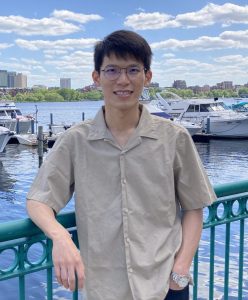
Computational Biophotonics Group
Taipei, Taiwan
M.S. in Photonics and Optoelectronics, National Taiwan University
B.S. in Electrical Engineering, National Taiwan University
I long for pursuing advanced research in optics and photonics after undergrad, and my interest lies in the intersection of physics and numerical simulation/optimization. MIT is great at ultrafast optics and nanophotonics, which is really attractive to me. Furthermore, MIT is a highly collaborative research environment with abundant resources and passionate researchers to carry out exciting works. Also, the community is supportive and always open to new ideas. For me, MIT was my dream school that I never imagined by any chance I could get into. I think I got pretty lucky.
The problem our group is working on is the wavefront shaping and image reconstruction in multimode fiber (MMF). MMF is capable of carrying rich information in contrast to single-mode fiber, becoming a promising candidate for wide-field endoscopic imaging and high-capacity optical telecommunication. However, the scrambling nature of images in MMF has long been an obstacle. My research is in two perspectives: (1) efficient measurement and characterization of the transmission properties of MMF, i.e., the transmission matrix ™, and (2) low dimensional, robust description of TM which is insensitive to fiber bending and other environmental perturbations. The goal is to retrieve high-fidelity images from MMF, enabling its clinical applications.
This research involves many elements that really intrigue me. For one thing, we need to dig into the propagation of optical waves in MMF with various configurations, which requires a deep understanding of fiber optics. For another, numerical analysis and optimization also play an essential role in our research. For instance, we need to utilize wavefront shaping, adaptive optics, and machine learning for image reconstruction. It is a dynamic, vibrant, and multidisciplinary research field, and I really enjoy the process of discovering new things.
There is always a relentless debate in my head whether going to academia or industry in the future, and I think it is still too early for me to make up my mind. Let alone the career path, I truly enjoy doing research. I only feel motivated when I find something is interesting, so I hope I could find countless interesting ideas to study and work on during my PhD studies.
